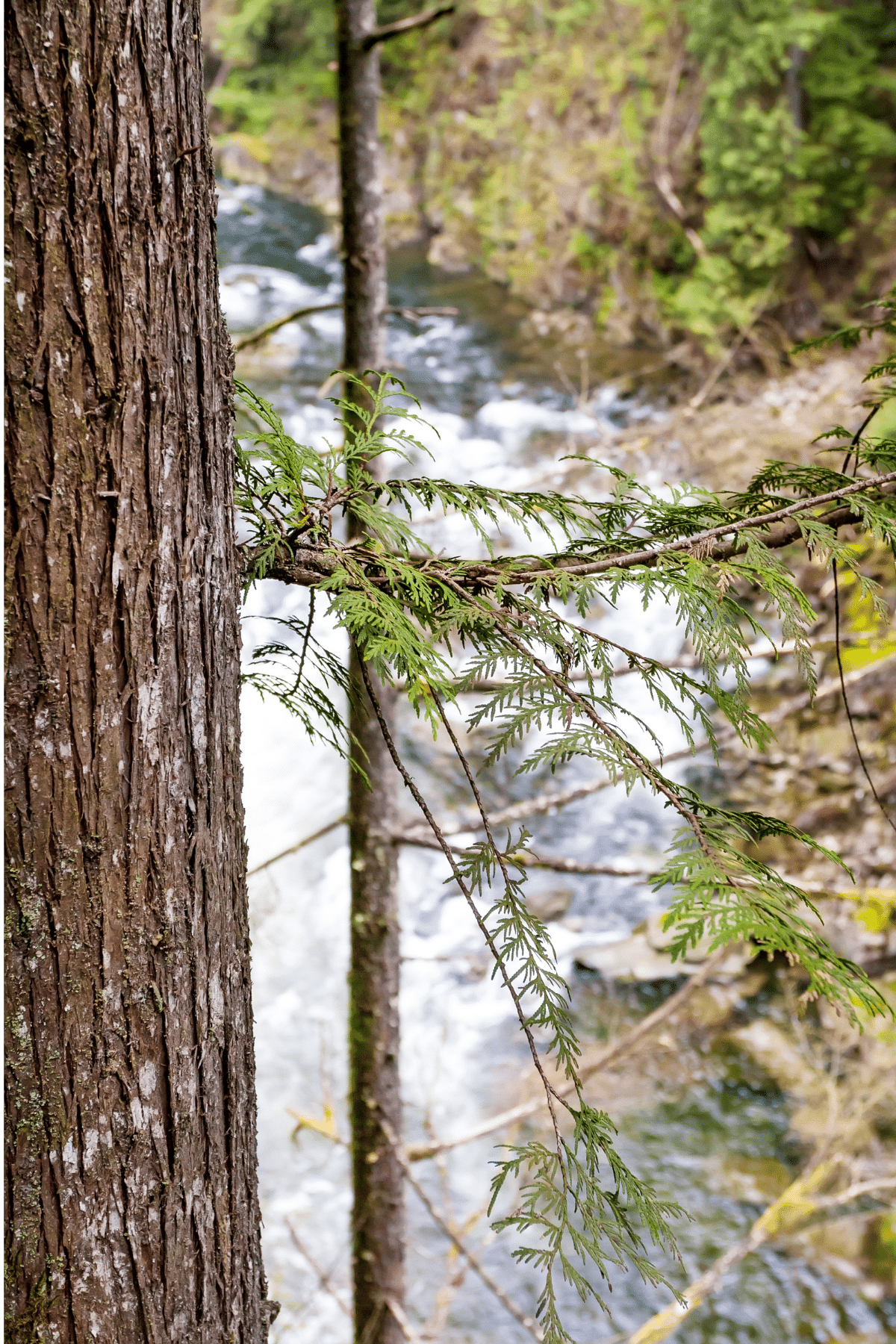About The Western Red Cedar (Thuja plicata)
The Western Red Cedar (Thuja plicata), also known as the giant arborvitae or canoe cedar, is an extraordinary, native evergreen tree that holds great cultural and practical significance in North America. Revered as the "tree of life" by indigenous peoples, this majestic species has shaped the lives and traditions of communities throughout history. With its towering stature, aromatic cedar wood, and versatile applications, the Western Red Cedar stands as a testament to the enduring bond between nature and humanity.
Impressive Stature and Iconic Features
Mature Western Red Cedar trees can reach towering heights, making them true giants of the forest. With their long, sweeping branches adorned with scale-like leaves, these large trees create an enchanting presence in the landscape. The bark, ranging from a reddish-brown to a light grey, peels off in long strips, revealing the tree's resilient and durable core. Its distinctive features have made it a sought-after resource for indigenous peoples, who utilized it for totem poles, exterior siding, roof shingles, and more.
Utilization by Indigenous Peoples
Indigenous communities across western Washington, Oregon, northern California, northern Idaho, and beyond have long revered the Western Red Cedar as a vital part of their cultural heritage. The native peoples skillfully crafted the tree's cedar wood into canoes, totem poles, and various tools essential for their livelihoods. The Western Red Cedar's rot-resistant qualities and workability made it an ideal material for constructing long-lasting structures and artifacts. The versatility of cedar wood allowed for the creation of intricate carvings on totem poles, capturing the rich mythology and history of indigenous cultures.
Canoes crafted from Western Red Cedar were not only vital for transportation and trade but also symbolic of the deep connection between the people and the natural world. These canoes were carefully constructed using techniques passed down through generations, utilizing the tree's straight trunks and lightweight yet durable wood. The Western Red Cedar's flexible and resilient properties allowed for smooth navigation through rivers, lakes, and coastal waters, enabling indigenous communities to explore vast territories, engage in fishing and hunting, and establish connections with neighboring tribes.
Reproductive Cycles and Environmental Adaptability
The Western Red Cedar's reproductive cycles demonstrate its adaptability to different environments. The tree produces pollen cones and seed cones, which facilitate the dispersal of its genetic material. The pollen cones release fine particles, carried by the wind to reach the female seed cones, resulting in the production of seeds that will germinate and grow into new trees. This reproductive strategy ensures the continuation of the species across various habitats.
Thriving in diverse environments, from the moist forests of the Pacific Northwest to the foothills of the Rocky Mountains, this resilient species plays a vital role in maintaining ecological balance and supporting a range of plant and animal species. The Western Red Cedar provides essential habitat for birds, mammals, and insects (49 different species of butterflies and moths as per the National Wildlife Federation). Its dense foliage offers shelter and nesting sites, while its branches and trunks serve as perches and resting spots for various creatures.
Preservation and Recognition
The importance of the Western Red Cedar in indigenous cultures has garnered recognition from institutions like Oregon State University. Researchers and scholars study the tree's ecological role, genetic diversity, and historical significance. Efforts are underway to ensure the longevity of this remarkable species and protect its invaluable contributions to both cultural heritage and environmental sustainability.
By promoting sustainable logging practices and reforestation initiatives, communities and organizations are working together to preserve the Western Red Cedar's natural habitats and promote its continued growth for future generations to appreciate. Recognizing the cultural significance of the tree, there is a growing emphasis on respecting and honoring the traditional knowledge and practices associated with the Western Red Cedar.
Final Words
The Western Red Cedar, with its towering presence and versatile applications, stands as a symbol of life and cultural legacy. From its utilization in the creation of totem poles and canoes to its use in construction materials like exterior siding and roof shingles, this magnificent tree has left an indelible mark on the landscape and the lives of indigenous peoples. Through ongoing preservation efforts and recognition of its significance, the Western Red Cedar continues to inspire and connect us to the rich tapestry of nature and human history. Embracing and respecting this remarkable tree is a testament to our commitment to honoring our heritage and nurturing the environment for generations to come.





